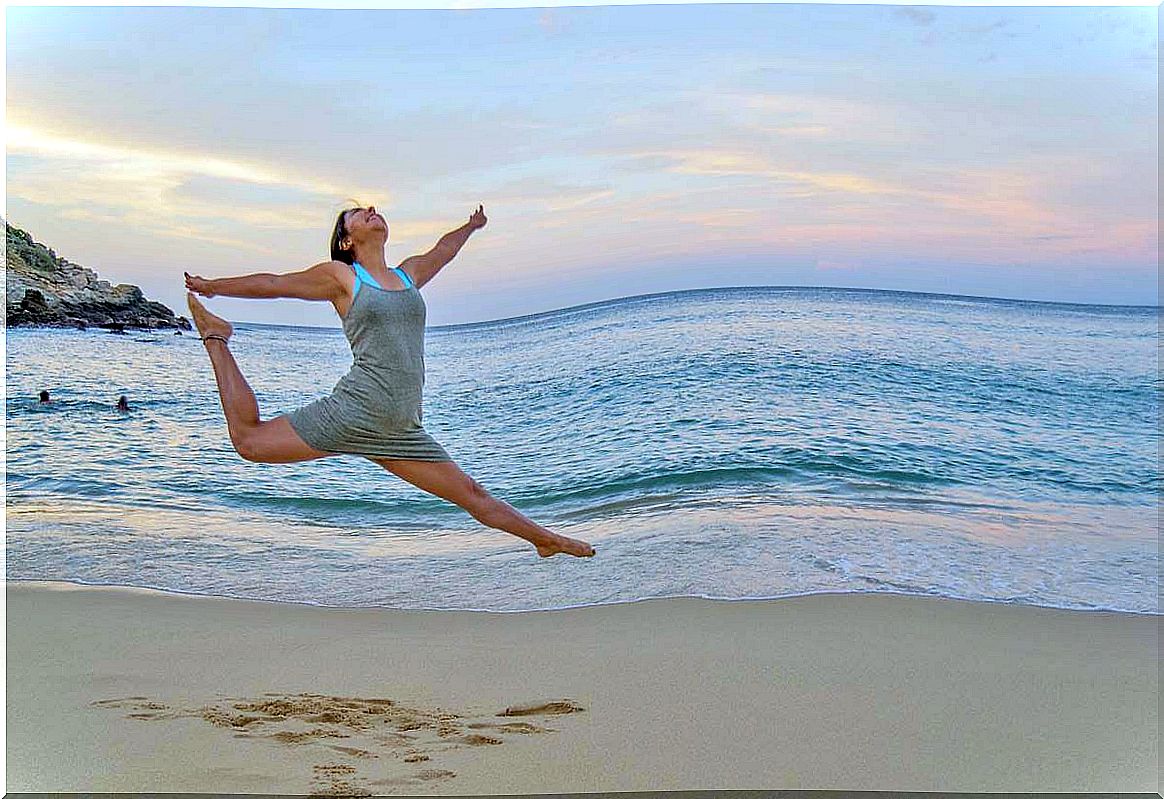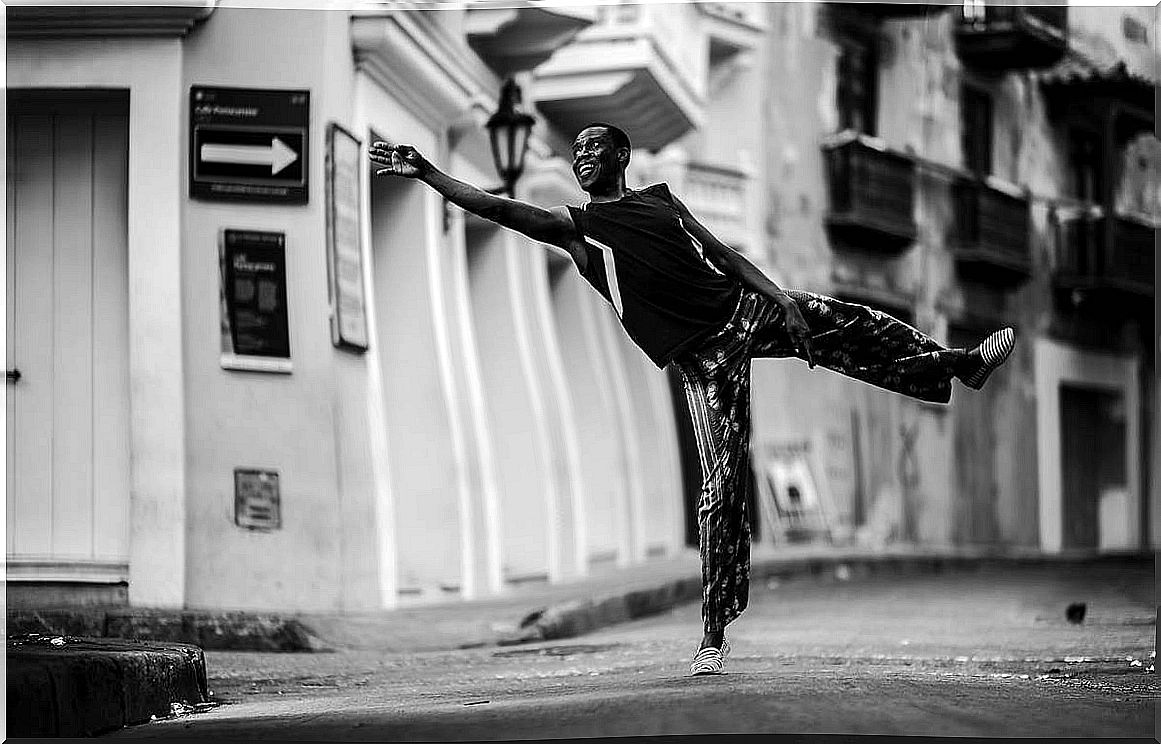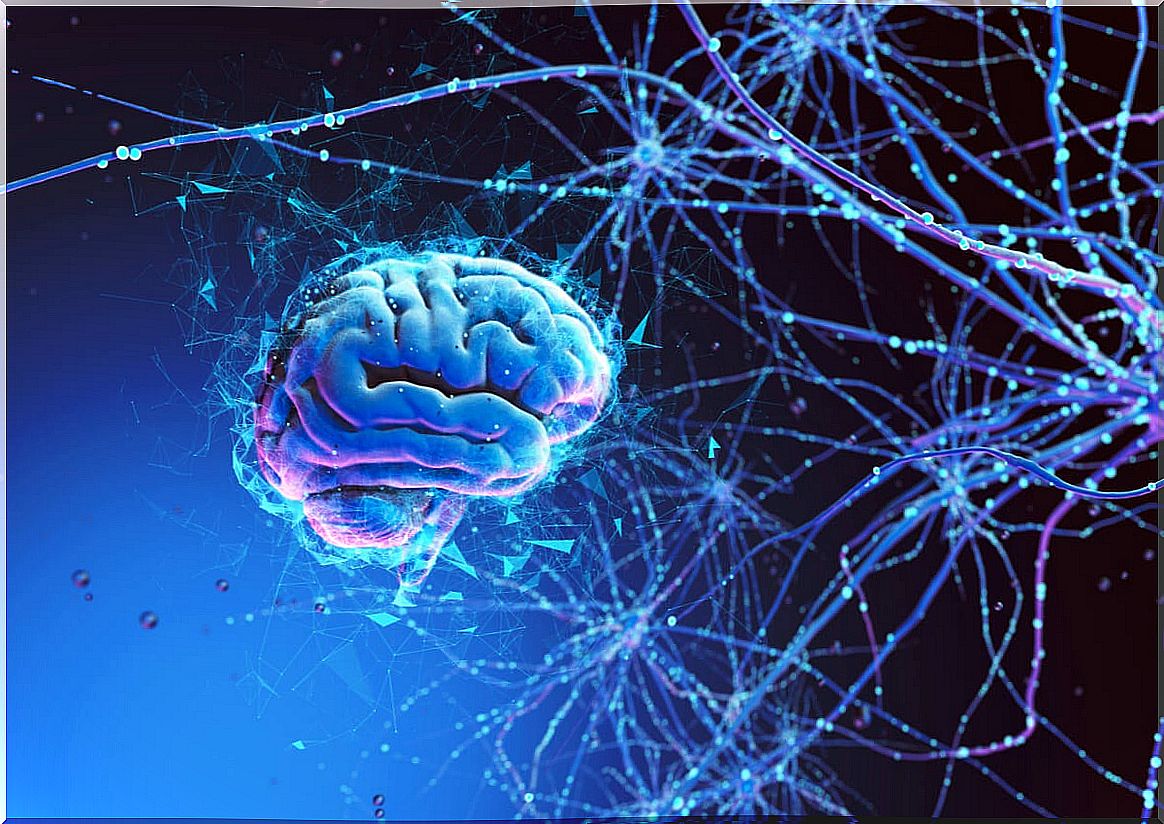Brain And Dance: The Wonderful Neurobiology Of Dance

Brain and dance form a fascinating link that attracts the attention of neuroscientists. Dance can change neurological architecture in exceptional ways and this is something that has been discovered recently. Seeing how music, dance and movement are synchronized to shape certain brain regions is very interesting.
We have known for decades that aerobic exercise improves mood and reduces stress. Now, we find more and more posts about how dancing elevates the experiences of joy, well-being and even happiness. It is as if dance often goes beyond the physical component to make contact with higher states, those that connect us with intense and transcendent emotions.
So much so, that in recent years, programs have even been developed for people with Alzheimer’s to benefit from dance as a powerful exercise for cognitive and emotional stimulation. Few things are as powerful for humans as movement, something challenging for a society increasingly prone to sedentary lifestyles.

Brain and dance, how are they related?
For many it is known that an effective treatment for depressive disorders is behavioral activation. This type of therapy seeks, above all, that the person engages in a series of activities (behaviors) that break the cycle of negativity and emotional stagnation. The movement of the body generates new experiences that activate the mind.
It would be a good resource to provide many patients with therapeutic dance classes geared towards this end, although obviously not everyone is attracted to this type of art. Thus, several scientists, when it comes to understanding the relationship between the brain and dance, focus their research on professional dancers. Those people who have been dancing for 5, 15 or 20 years show very special neurological peculiarities.
Dancing favors neural synchronization
Neural synchronization is defined as the ability for different nerve cells in the brain to synchronize their activity and emit electrical impulses at the same time. What benefit does this have? Actually a very prominent one. Research from Virginia State University shows that professional dancers have better working memory.
This cognitive resource is what allows us to save information in the short term and also to more effectively manage processes such as attention or visuospatial memory.
Enhanced Theta Waves in Dancers
There is another interesting aspect and it is related to the synchronization of theta waves of the brain. These brain waves connect and balance the functioning of the hippocampus, basal ganglia, and cerebellum with the cerebral cortex. This results in a direct connection between music, emotions, and physical movements.
Increased stimulation in the somatosensory cortex
The somatosensory cortex is located in the parietal lobe and is one of the most active areas in dancers. This area is in charge of regulating the following processes:
- Hand-eye coordination.
- Tactile information.
- Vibrational sensations.
- Muscle movements
- The receptors of the somatosensory cortex receive information related to touch, temperature, pain and, in turn, inform us of the position of our body.
Brain and dance: stimulation to promote new neural connections
Brain and dance have a very healthy relationship thanks to neuroplasticity. Studies, such as those carried out at the University of Sao Paulo (Brazil), affect how professional dancers develop a brain with greater neural connections.
Dance enhances creativity
Dancing is a great stimulant for the brain, it makes it more flexible by raising the nerve connection and promoting synchronization. All this reverts directly to cognitive processes. Movement stimulates the mind, fixed thought patterns are broken to open up to new perspectives.
Likewise, the movement of the body relieves stress, worry, we release endorphins and all this reverts to creativity, innovative thinking.

Conclusions
Dance has been part of the human experience since the beginning of time. We could say that it is part of our collective DNA. We danced to connect with our social groups, to talk with nature, to express emotions, celebrate events …
If brain and dance have kept such a close and significant link for centuries, we should continue to make use of it. In our own way, as we wish and with the music that most motivates, likes and excites us. Likewise, let us not neglect the great relevance of dance and movement therapy for people with cerebral palsy and neurodegenerative diseases.
Alzheimer’s patients reconnect with life and their close reality the moment they listen to music. Getting up and dancing (within your own capacities) is a highly relevant stimulus that is worth promoting in cognitive stimulation programs.









